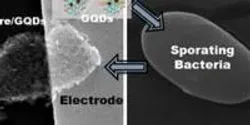News

The total volume of research at the University of Michigan was $1.31 billion in the fiscal year that closed June 30, 2014, just below the record high of $1.33 billion from the previous year.

By figuring out how to precisely order the molecules that make up what scientists call organic glass — the materials at the heart of some electronic displays, light-emitting diodes and solar cells — a team of chemists from the University of Wisconsin-Madison has set the stage for more efficient and sturdier portable electronic devices and possibly a new generation of solar cells based on organic materials.

University of Washington scientists have built a new nanometer-sized laser — using the thinnest semiconductor available today — that is energy efficient, easy to build and compatible with existing electronics.

Two prominent researchers at UC Davis are under a microscope for their work in stem-cell biotechnology. The pair from University of California, Davis was awarded close to $4 million in funding to improve biotechnology intended for physicians studying stem cell treatments.

Scientists at Albert Einstein College of Medicine of Yeshiva University and their international collaborators have developed a novel fluorescence microscopy technique that for the first time shows where and when proteins are produced. The technique allows researchers to directly observe individual messenger RNA molecules (mRNAs) as they are translated into proteins in living cells. The technique, carried out in living human cells and fruit flies, should help reveal how irregularities in protein synthesis contribute to developmental abnormalities and human disease processes including those involved in Alzheimer’s disease and other memory-related disorders. The research will be published the March 20 edition of Science.















